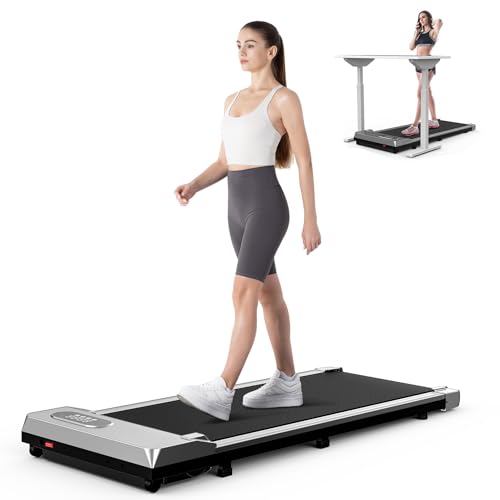Meet One Of The Tread Mill Industry's Steve Jobs Of The Tread Mill Industry
Treadmills: A Comprehensive Guide to Understanding Their Functionality, Benefits, and Appropriate Selection
Introduction
Treadmills have actually become a staple in modern physical fitness routines, both in homes and gyms worldwide. They use a convenient and effective way to keep cardiovascular health, increase endurance, and help in weight management. Brad Shaw explores the different kinds of treadmills, their advantages, functions to think about when purchasing, and some FAQs to assist users in making notified decisions.
Types of Treadmills
When it concerns choosing a treadmill, it is vital to comprehend the various types offered in the market. Here are the primary categories:
1. Manual Treadmills
- Mechanism: These treadmills have a basic style and depend on the user's efforts to move the belt.
- Pros: More affordable, quieter operation, no electrical energy required.
- Cons: Limited features, may not offer the same series of exercise intensity.
2. Motorized Treadmills
- Mechanism: Powered by a motor that drives the belt, permitting users to stroll or run at a set pace.
- Pros: Greater variety of speeds and slopes, geared up with various functions such as heart rate monitors and exercise programs.
- Cons: More pricey and may need more upkeep.
3. Folding Treadmills
- Mechanism: Designed for those with limited space, these treadmills can be folded for simple storage.
- Pros: Space-saving, often motorized, flexible functions.
- Cons: May be less durable than non-folding designs.
4. Commercial Treadmills
- Mechanism: High-quality machines developed for use in gyms and physical fitness centers.
- Pros: Built to endure heavy usage, advanced functions, typically consist of service warranties.
- Cons: Pricey and not perfect for home use due to size.
5. Curved Treadmills
- System: An unique style that allows users to move the belt utilizing their own energy.
- Pros: Offers a more natural running experience, promotes much better running form.
- Cons: More pricey and can be noisier.
Treadmill Type
Pros
Cons
Manual
Inexpensive, no electricity needed
Limited functions
Motorized
Range of speeds, advanced features
Upkeep required
Folding
Space-saving, typically motorized
May lack sturdiness
Commercial
Developed to last, professional-grade features
Costly
Curved
Natural running experience, promotes great form
Greater cost
Benefits of Using Treadmills
Treadmills use various advantages that can contribute to one's total fitness objectives. Some of these advantages consist of:
- Convenient Workouts: Treadmills permit users to exercise inside regardless of weather.
- Cardiovascular Health: Regular use can enhance heart health by increasing stamina and promoting healthy circulation.
- Weight Management: Effective for burning calories, which aids in weight loss and management.
- Adjustable Workouts: Users can manage speed, slope, and duration to develop personalized exercise experiences.
- Security: Treadmills supply a foreseeable surface area, reducing the threat of falls compared to outdoor running.
- Multifunctional: Many treadmills included functions like heart rate screens, exercise programs, and even home entertainment systems.
Picking the Right Treadmill
When picking a treadmill, prospective buyers need to think about numerous essential elements:
Features to Consider:
- Motor Power: Typically measured in horse power (HP), a motor strength of a minimum of 2.5 HP is suggested for major runners.
- Belt Size: A longer and larger belt accommodates various stride lengths, providing convenience throughout workouts.
- Incline Settings: Adjustable incline features simulate outdoor hill running and can increase exercise intensity.
- Weight Capacity: Ensure the treadmill can support the user's weight for security and longevity.
- Console Features: Look for easy to use control panels, workout programs, and Bluetooth compatibility for streaming music or other functions.
Budget plan Considerations
- Under ₤ 500: Entry-level manual treadmills suitable for casual walkers.
- ₤ 500 – ₤ 1,500: Mid-range motorized treadmills that use more functions and much better durability.
- ₤ 1,500 – ₤ 3,000: High-end designs with sophisticated innovation, larger motors, and longer guarantees.
- Over ₤ 3,000: Commercial-grade treadmills perfect for frequent usage in gyms or training facilities.
Often Asked Questions (FAQs)
1. How frequently should I use a treadmill?
It is recommended to utilize a treadmill a minimum of 3 to five times a week, incorporating numerous strength levels for best results.
2. Can I drop weight by utilizing a treadmill?
Yes, constant use of a treadmill can contribute to weight reduction, specifically when combined with a well balanced diet and strength training.
3. What is the best speed to walk on a treadmill for beginners?
A speed of 3 to 4 miles per hour is an appropriate variety for novices. It's essential to begin slow and gradually increase pace as comfort and endurance enhance.
4. Do I require to use a treadmill if I already run outdoors?
Utilizing a treadmill can offer extra advantages, such as regulated environments and varied exercises (slope, intervals) that are not always possible outdoors.
5. How do I maintain my treadmill?
Regular maintenance includes lubricating the belt, cleaning the deck and console, and checking the motor for optimum performance.
Treadmills are essential tools for those wanting to improve their fitness levels in a controlled and convenient manner. With numerous types available, comprehending their functions and advantages is essential for making a notified purchase. By considering individual exercise needs, space availability, and spending plan restrictions, people can find the most ideal treadmill that fits their lifestyle. Integrating treadmill workouts into a well balanced fitness regimen can lead to enhanced health outcomes and an enjoyable exercise experience.
